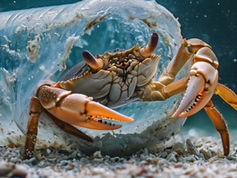Search
Harmful Algal Blooms
- Lauren A. Moe

- Jan 2, 2023
- 3 min read
Updated: Jul 7, 2023
Harmful algal blooms (HABs) are becoming more and more common throughout the world’s oceans, but what are they?
When populations of algae/phytoplankton grow so rapidly that it causes major issues within the environment, this is called a harmful algal bloom (if you haven’t read the post, Phytoplankton (Not the Spongebob Kind), check it out here). You may have seen these changes without knowing it, especially if you live in a coastal area. Red tides, excessive foam on the surface, and thick green mush floating near shore are all examples of HABs.

Image source: NRDC (Landsat-8, NOAA)









Comments